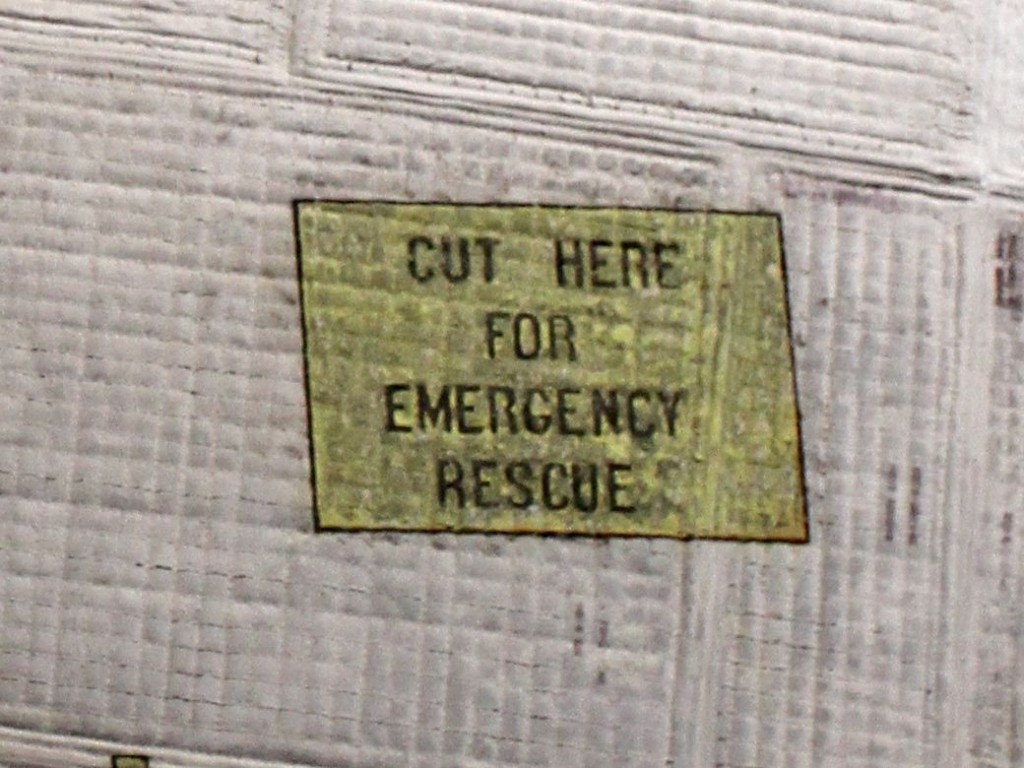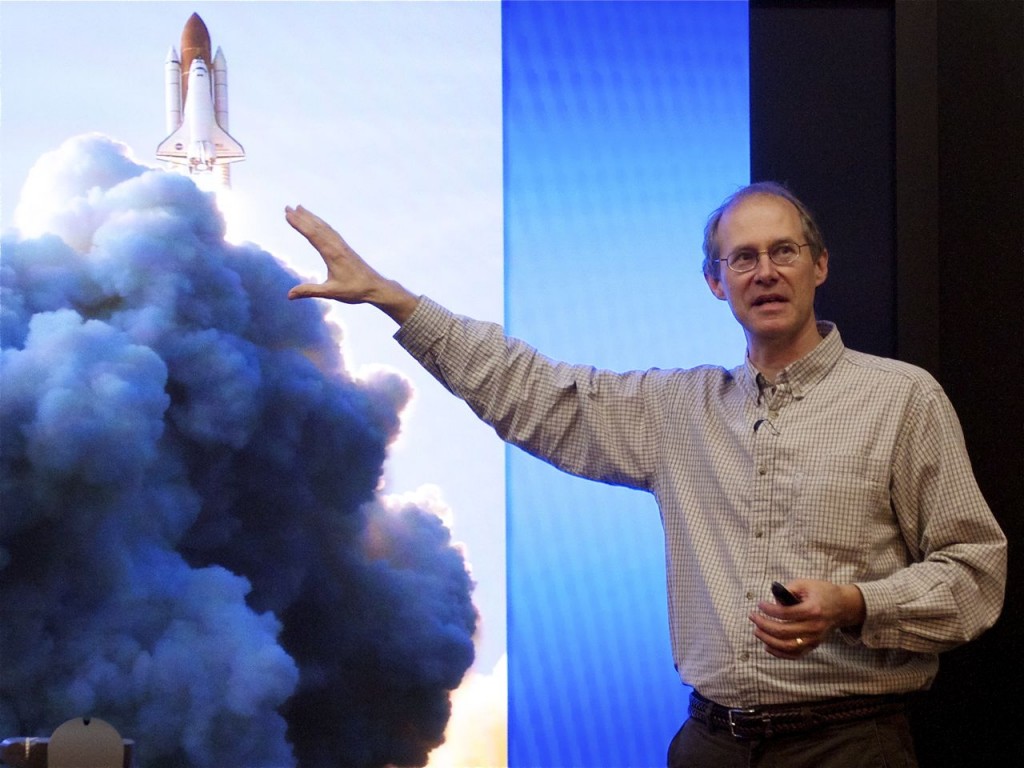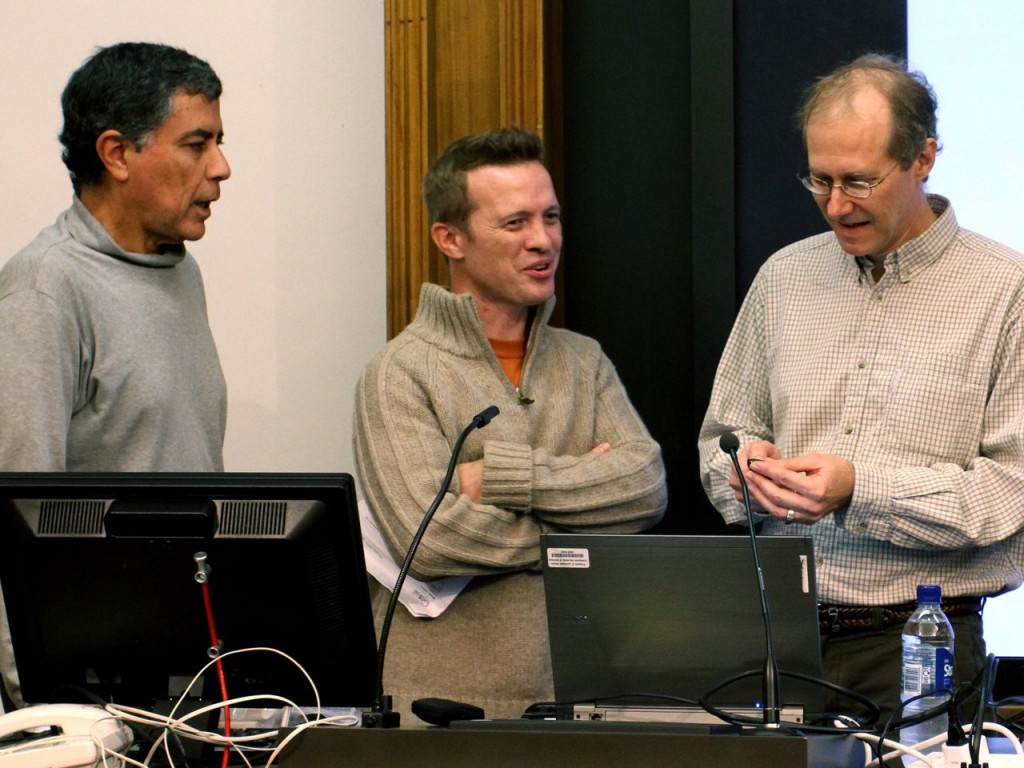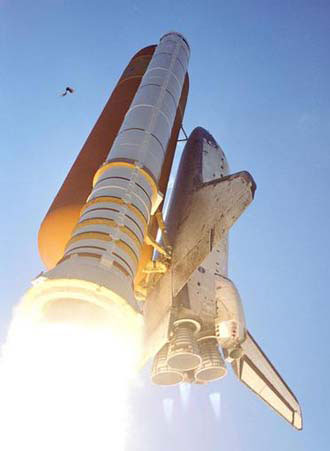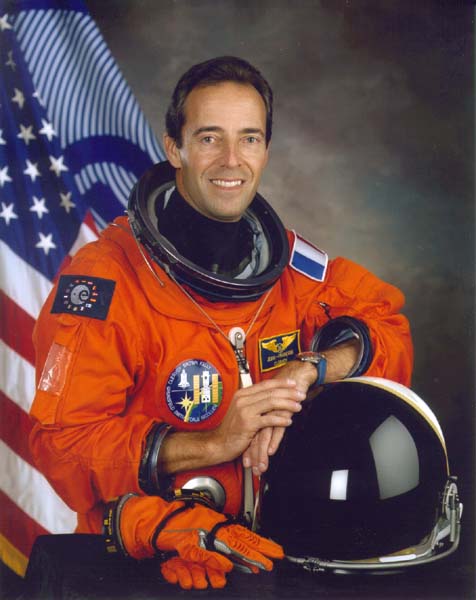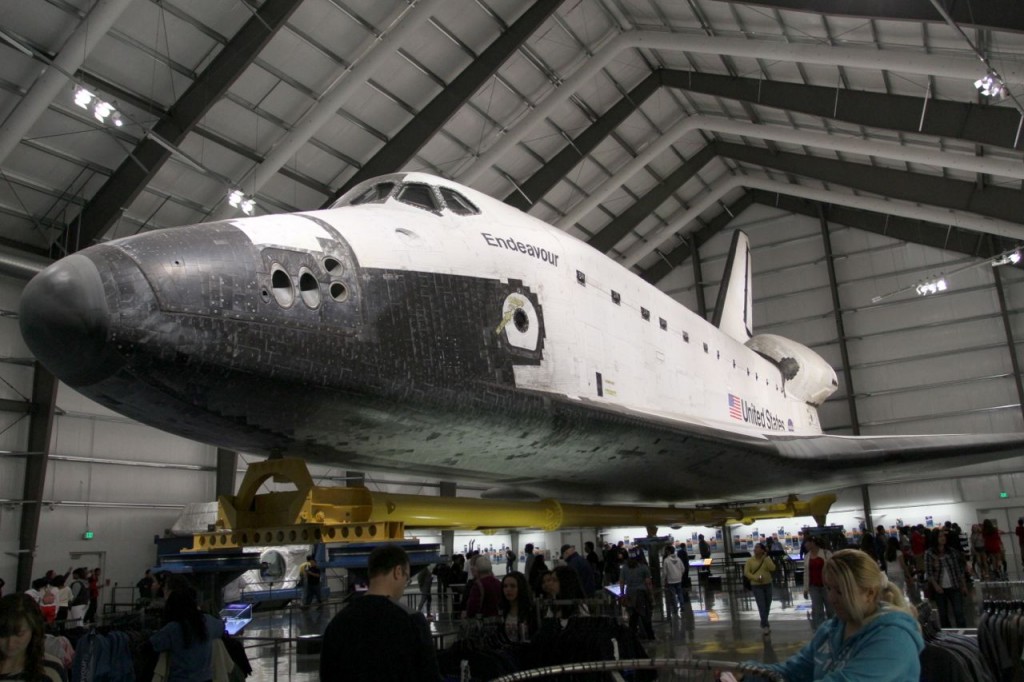
Evocative Endeavour
I did kind of wish for a second or two today, staring up at the big, black, underbelly of Space Shuttle Endeavour – boxed away at the California Science Center in Los Angeles – that I’d made more of an effort to see she or her sisters performing live.
Am I getting all mushy and romantic about a spacecraft now? Well, maybe just a bit. My wife Erin said she felt unexpectedly moved after our visit. I’d set myself to appreciative-engineer-mode before I went in, but still felt like I was standing on the rim of the Grand Canyon for the first time; you’ve seen all the postcards and videos, and can’t imagine the real deal adding anything new – but it does. That’s twice I’ve been emotionally sucked in by an iconic cliché. Shocking.
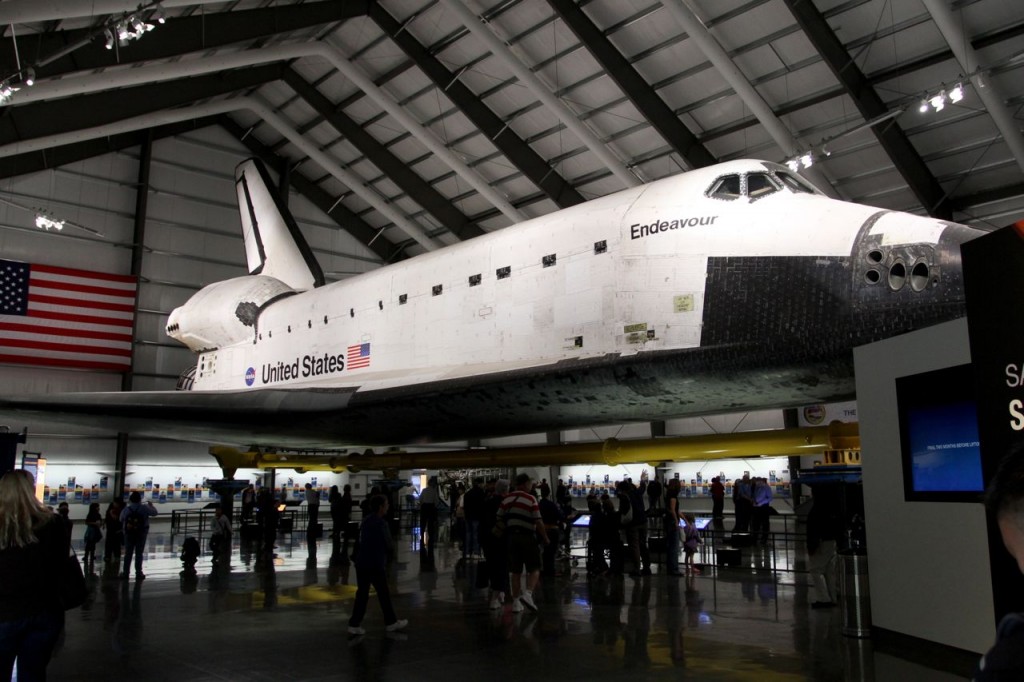
Objects are evocative. At one point I found myself back in my lab as a research student in Birmingham in 1986, hearing about the Challenger accident. Then I’m back imagining all those tiles, engines, doors, and windows flying apart.
And there on Endeavour is that area of wing leading-edge, damaged on Columbia by falling debris during launch, causing her demise on re-entry in 2003 (more on that in this earlier post).
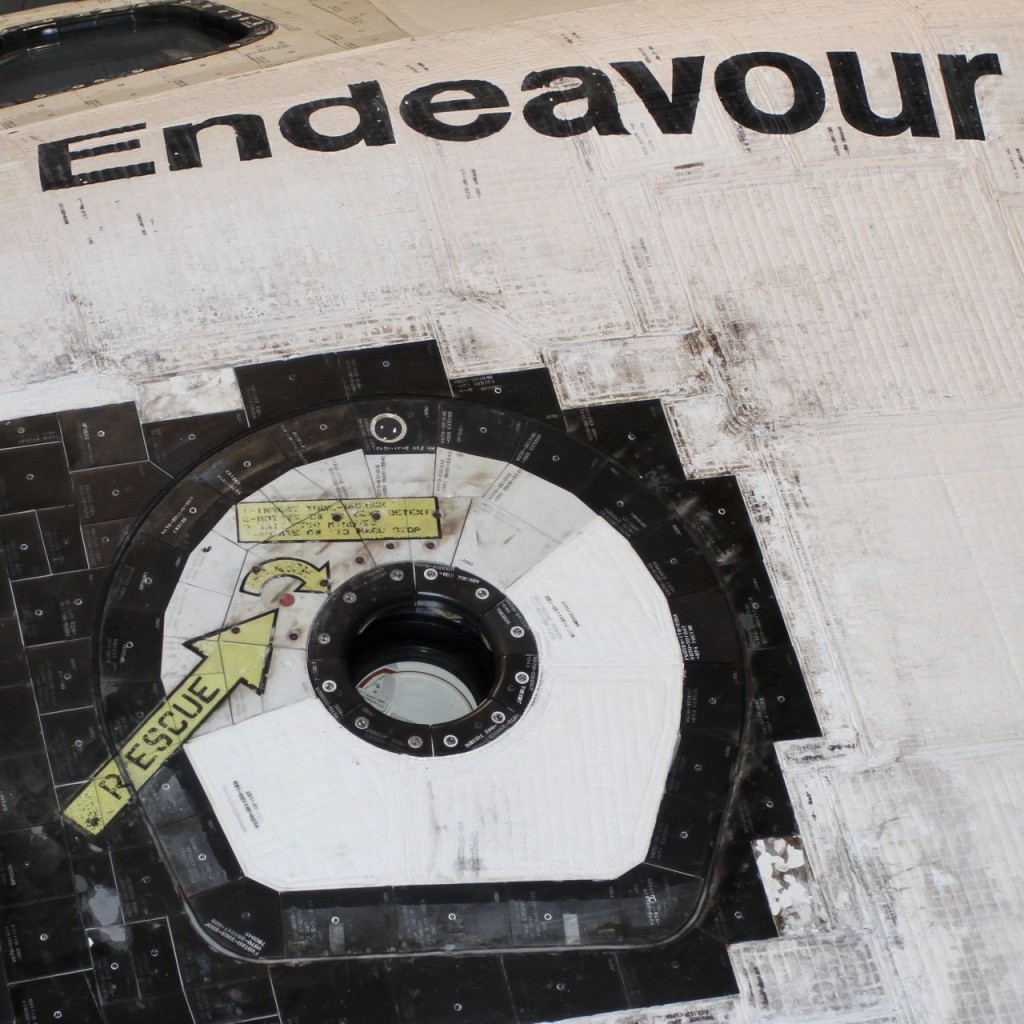
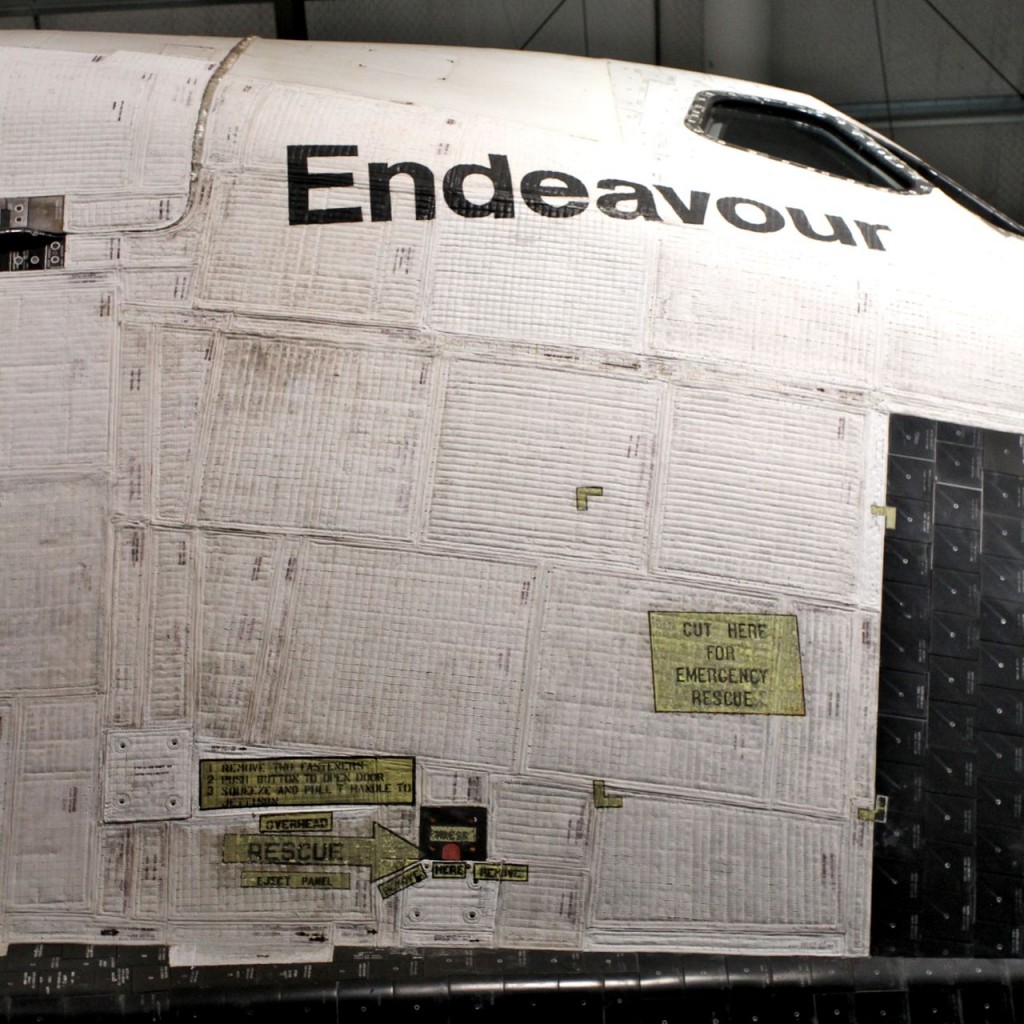
First Impressions
There is of course plenty of engineering to appreciate, and science behind it to ponder. But my gut reaction is how big she is, the length of the cargo bay, and how….dirty . It looks like she’s been treated like some science fiction fan might treat an Airfix model of the Millennium Falcon: roughed up, artificially distressed – so it looks like the real thing. Except the distress, evidently manageable, is real.
Size perception is odd too. I’ve seen video of the shuttle during ascent (in fact you can see it in Matt Mellis’s movie/iPad App called ‘Ascent’), where the ‘body flap’ – that piece below the engine in the picture below – is vibrating violently; it’s positively oscillating. The flap looks small and flimsy on the film, but it’s a huge construction; the forces must be tremendous.
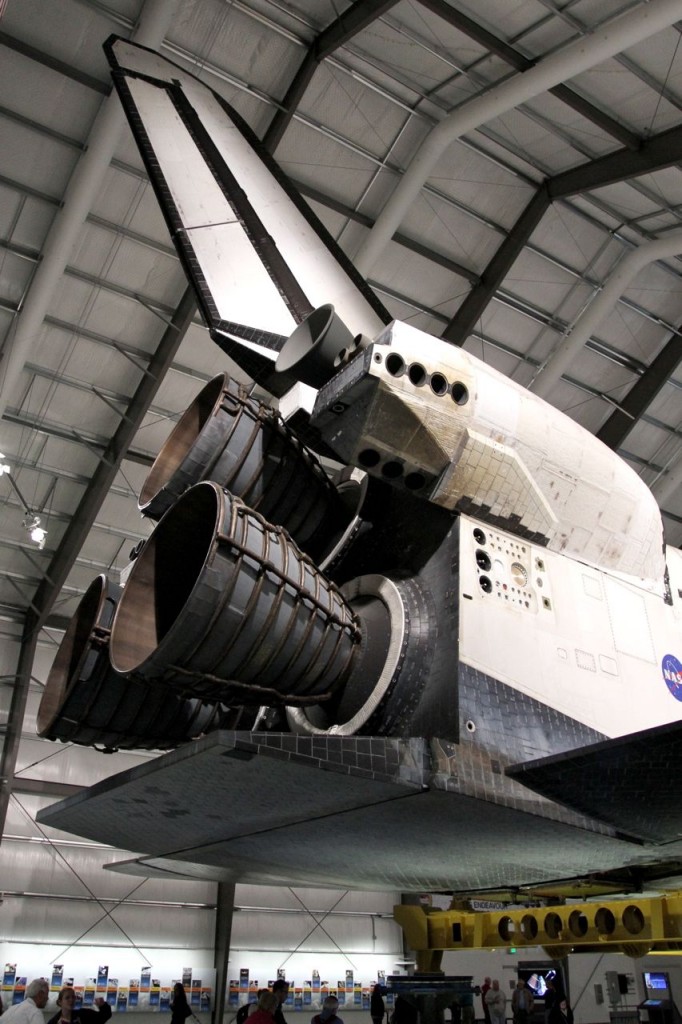
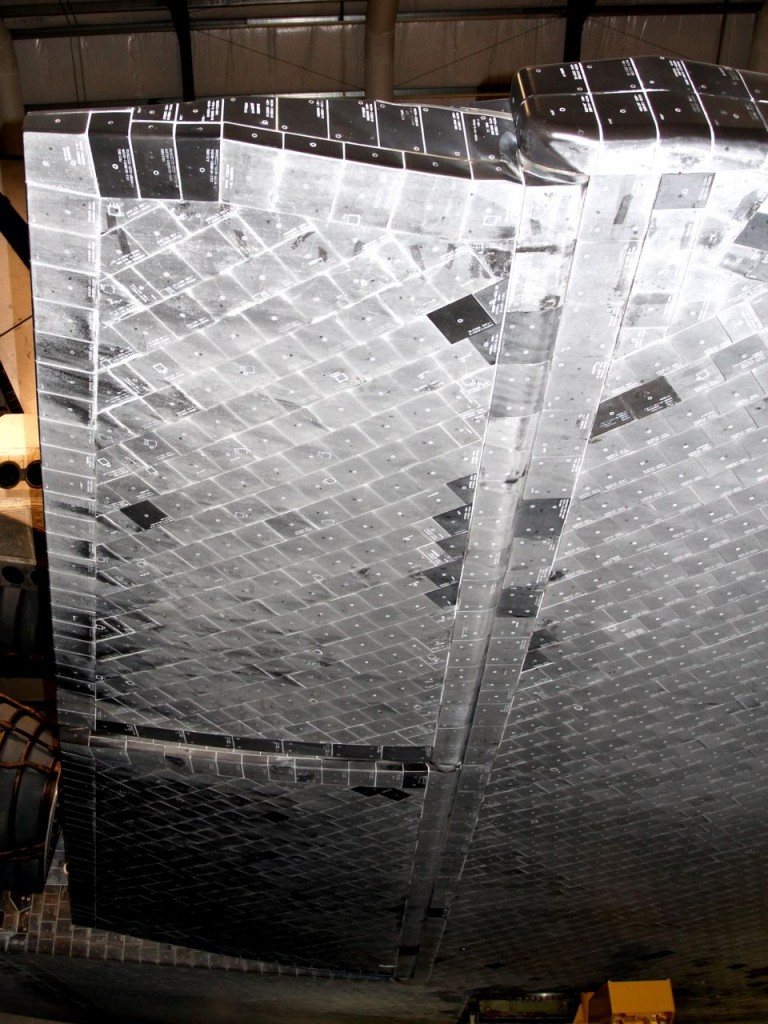

Engines
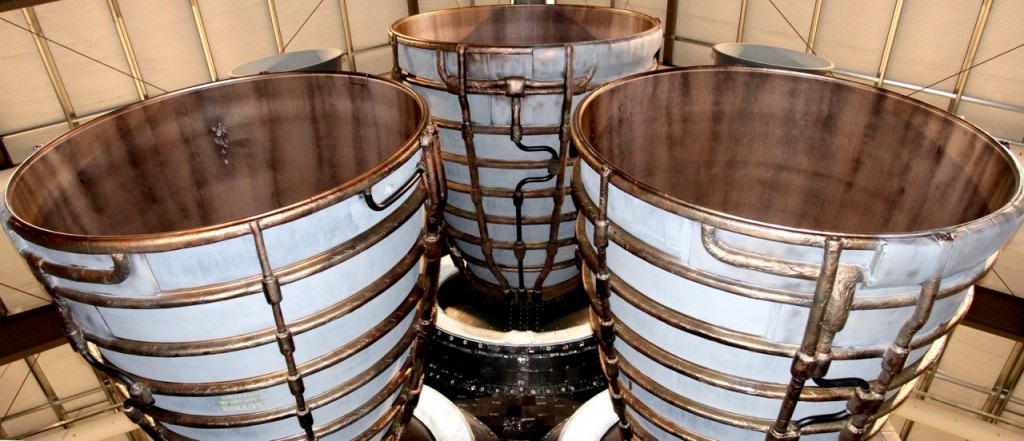
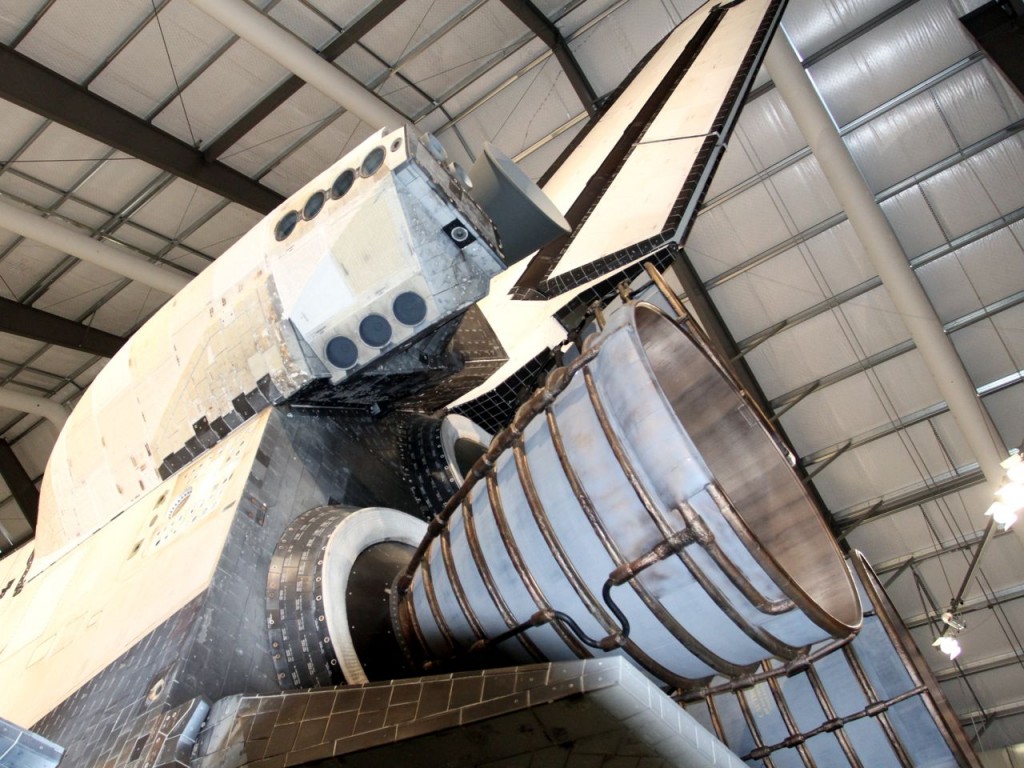
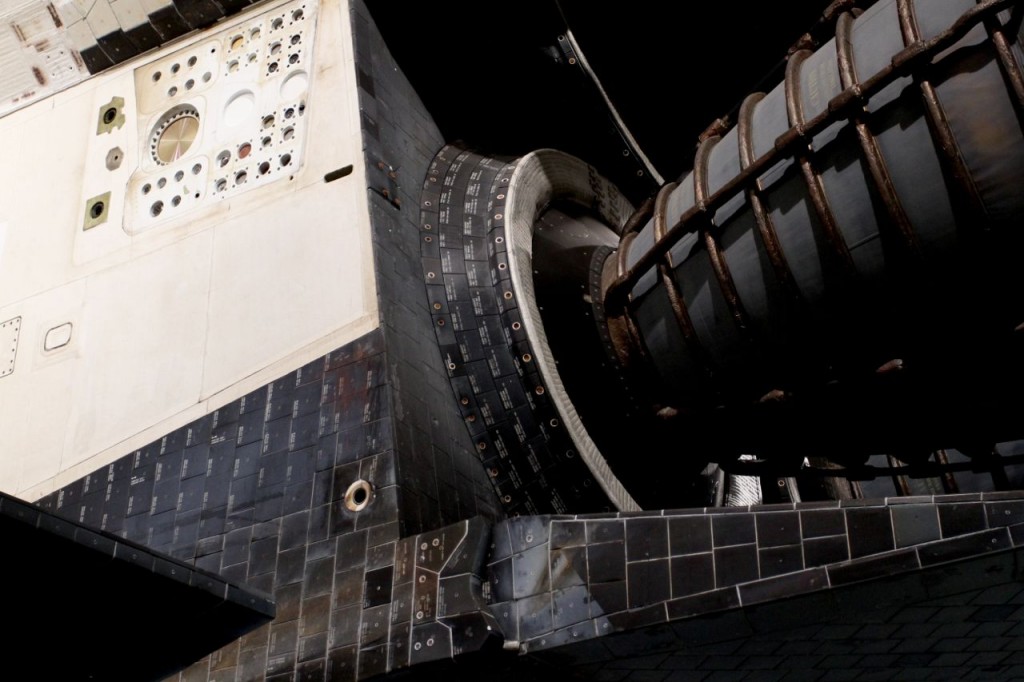
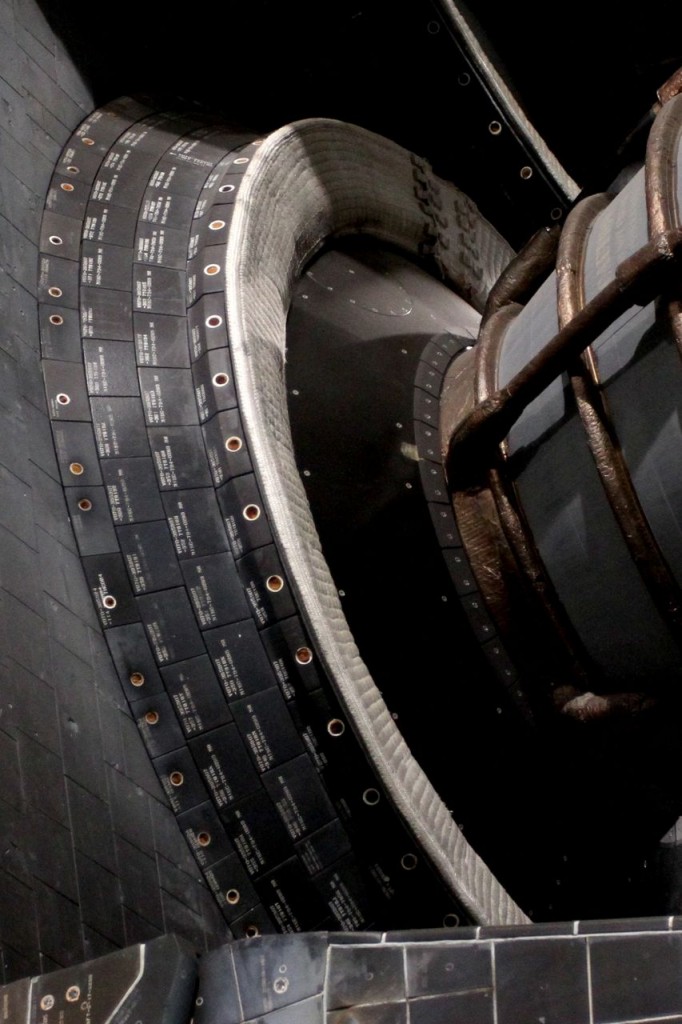
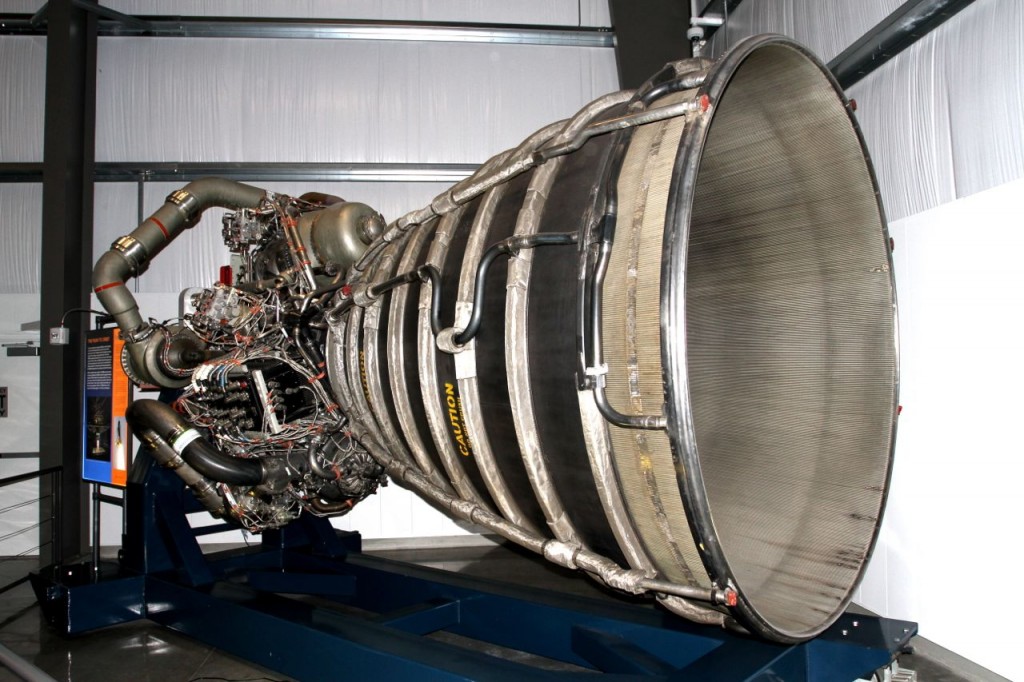
Thrusters
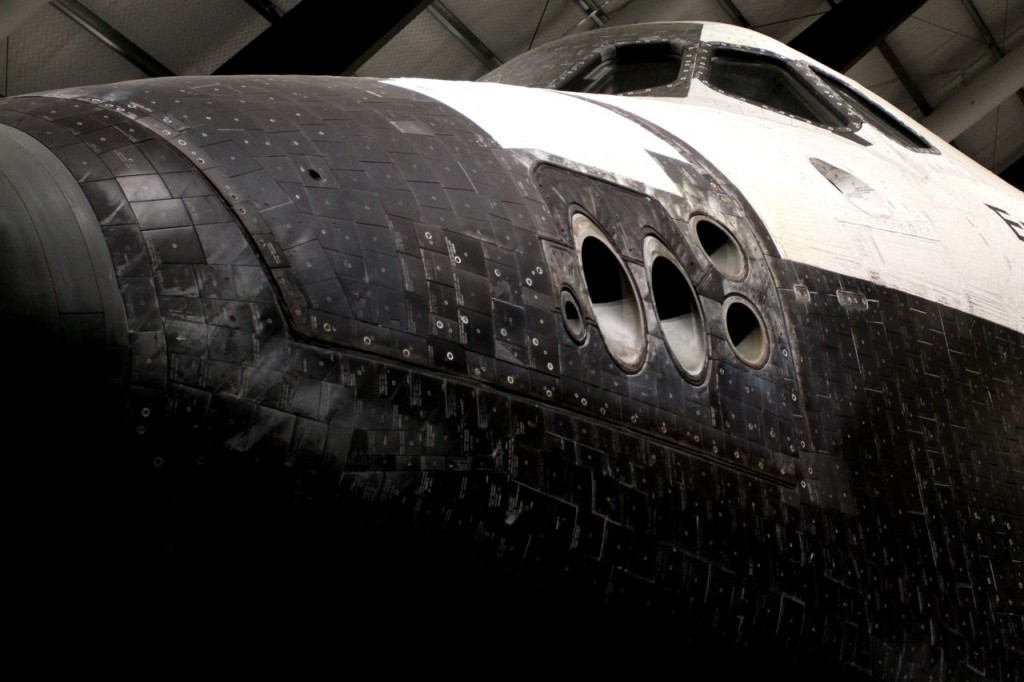
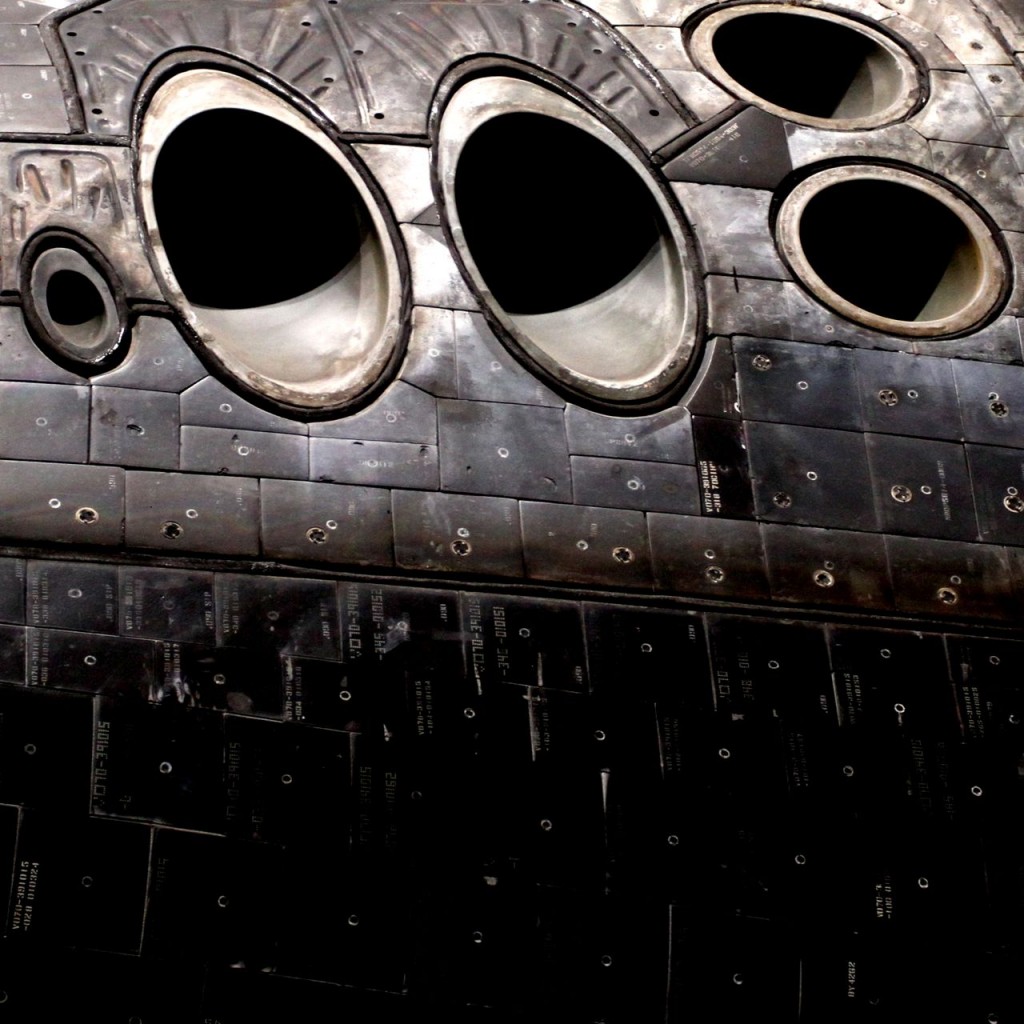
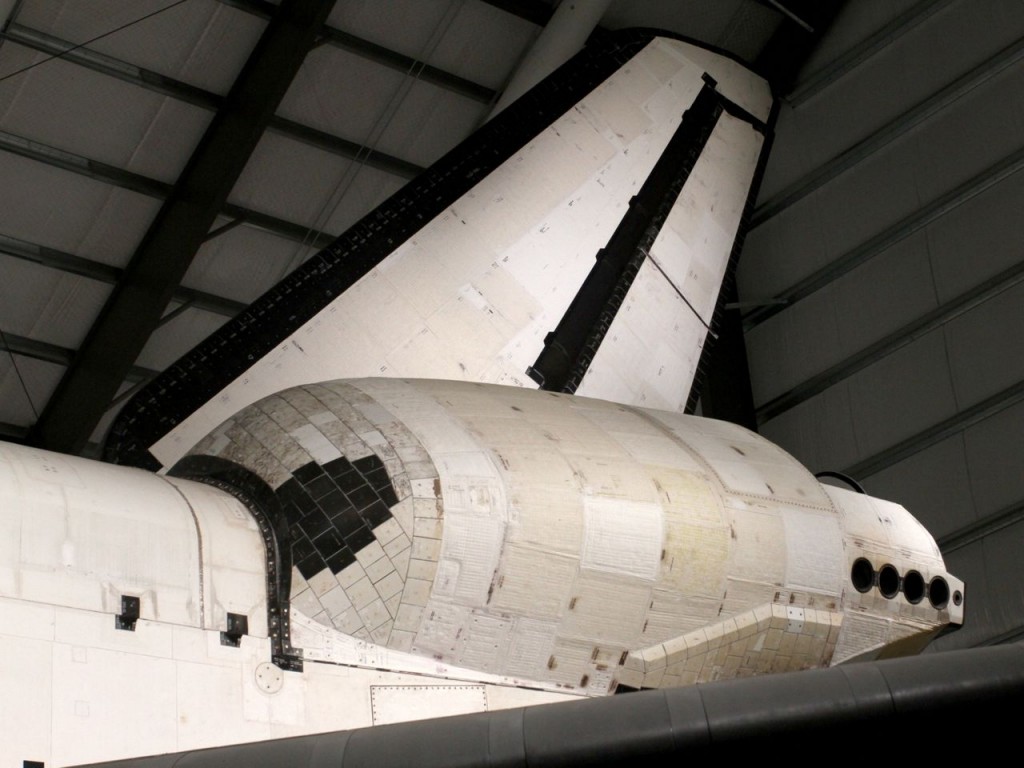
Tiles
The famous tiles, part of the Shuttle’s Thermal Protection System (TPS), are unmistakable. Designed not to ablate like the heat shields on the Apollo capsules, tiles do suffer wear and damage, and some had clearly been replaced with new ones for display.
The complexity and variation of tile design is striking. If you think tiling round the bathroom wash-basin is tricky, take a look at the area round the main engine gimbals and thrusters of the Shuttle. No wonder maintenance costs were high.
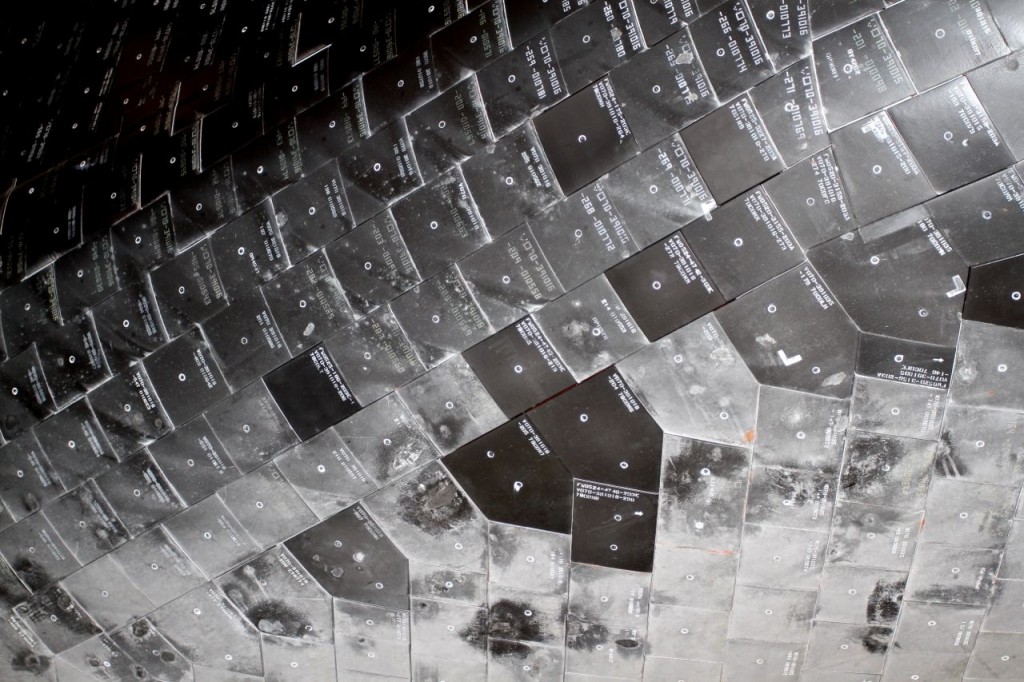
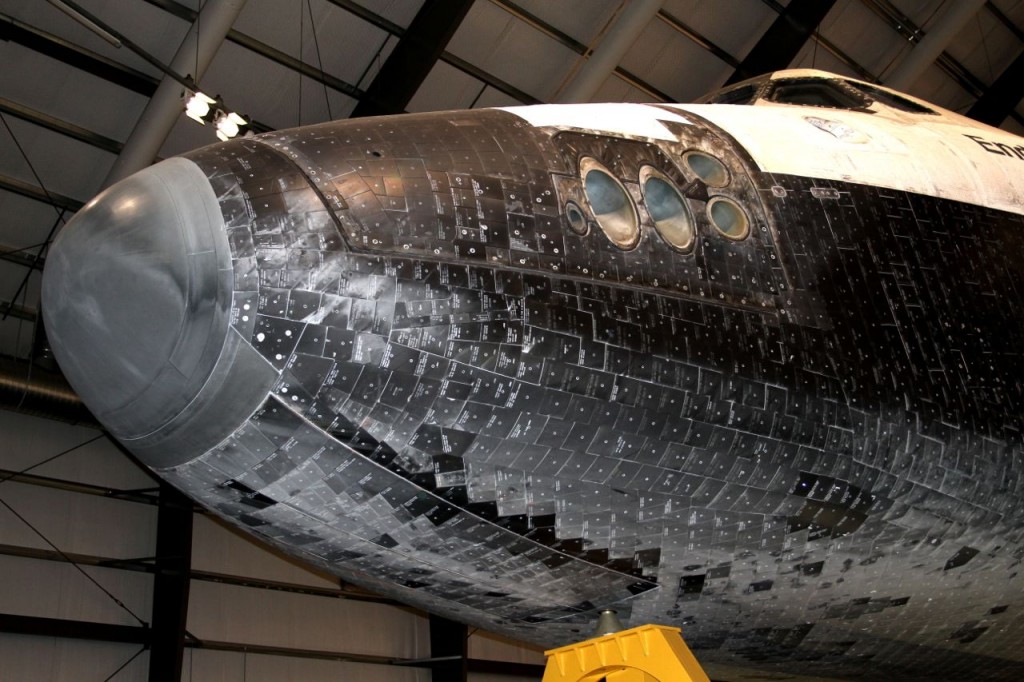
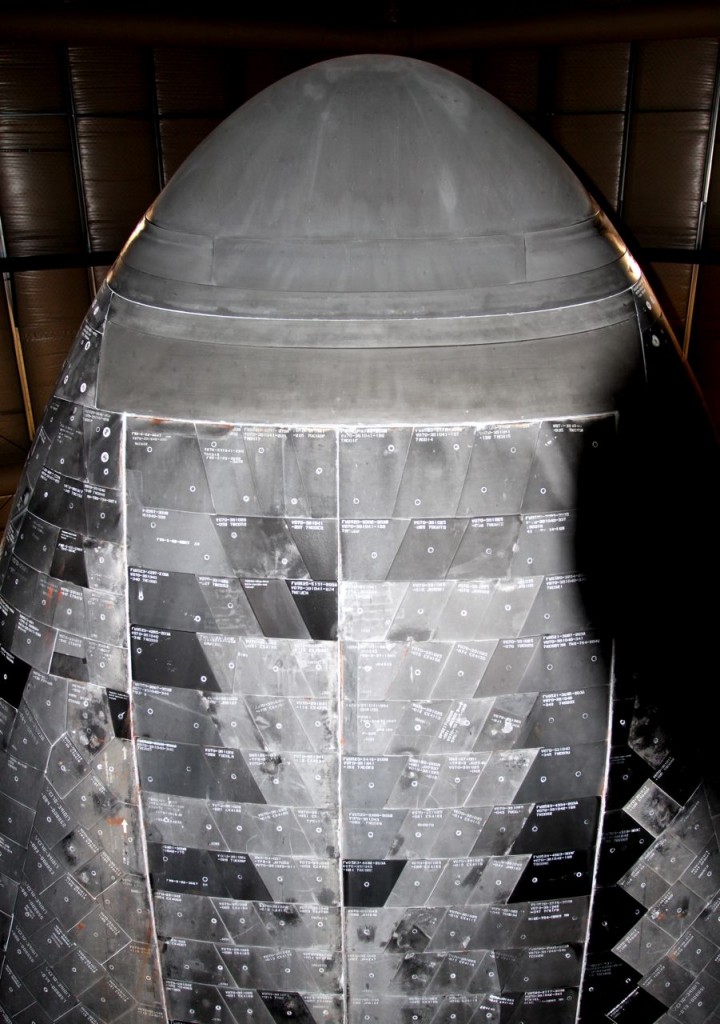
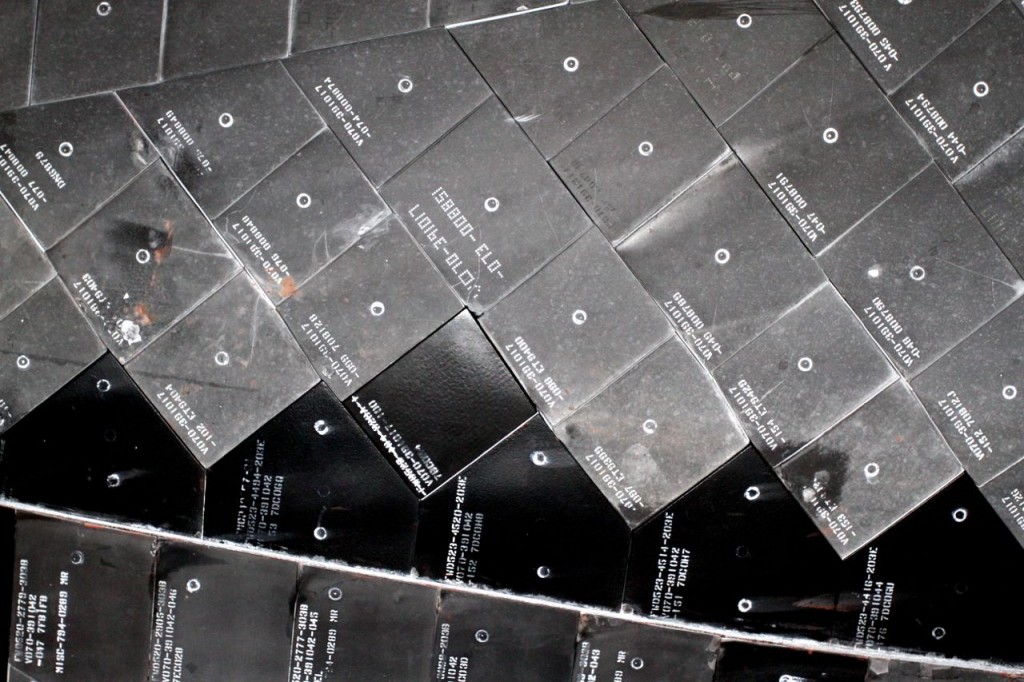
Earthquake Protection
Several sliding bearings, or seismic isolators, sit between the Shuttle and its supporting pillars, insulating Endeavour from the perils of Los Angeles’ earthquakes. The idea is the Shuttle rocks around harmlessly until the shaking ground settles down.
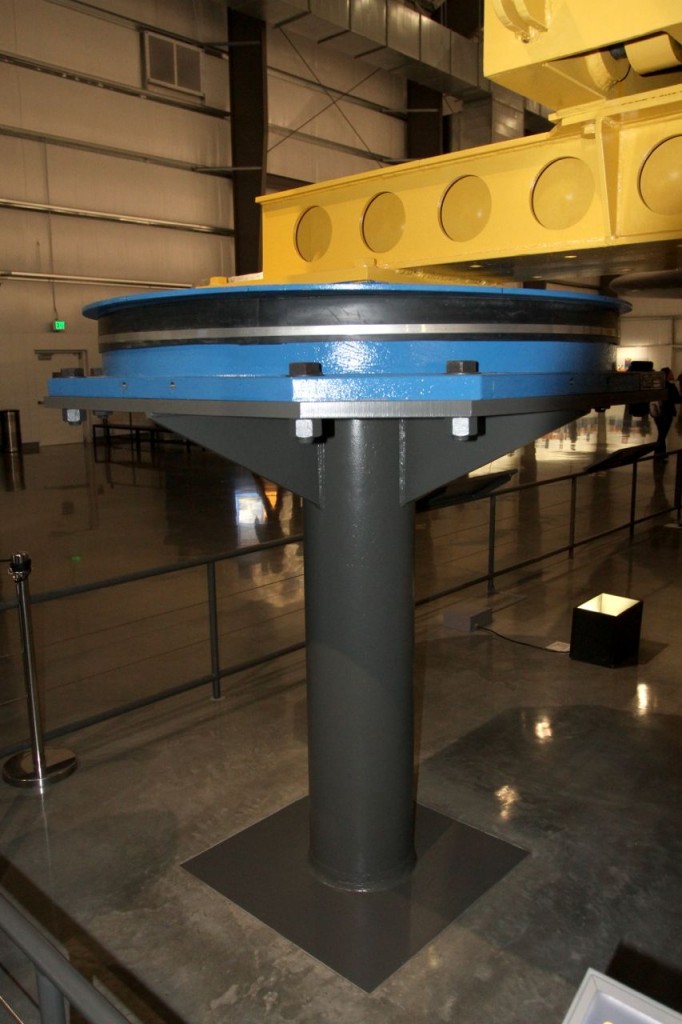
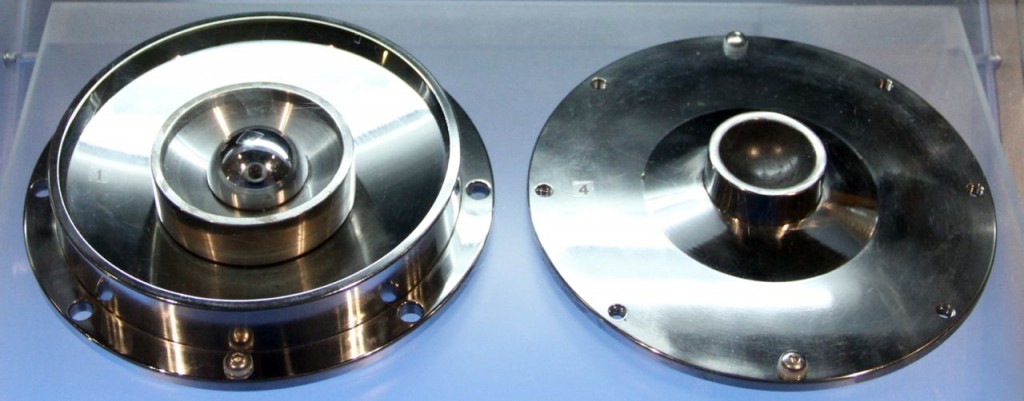
Visiting
We saw Endeavour in temporary accommodation; it’s destined to be mounted vertically in a custom-designed building. That said, the exhibition as it stands doesn’t feel temporary, and the associated display areas and accompanying audio-visuals describing California’s particular role in the Shuttle story and showing off various artifacts from the program – including, importantly, the Shuttle’s WC or ‘space potty’, are excellent.
Entry to the California Science Center is free, but there’s a very reasonable $2 entry charge or ticket booking fee to see Endeavour.
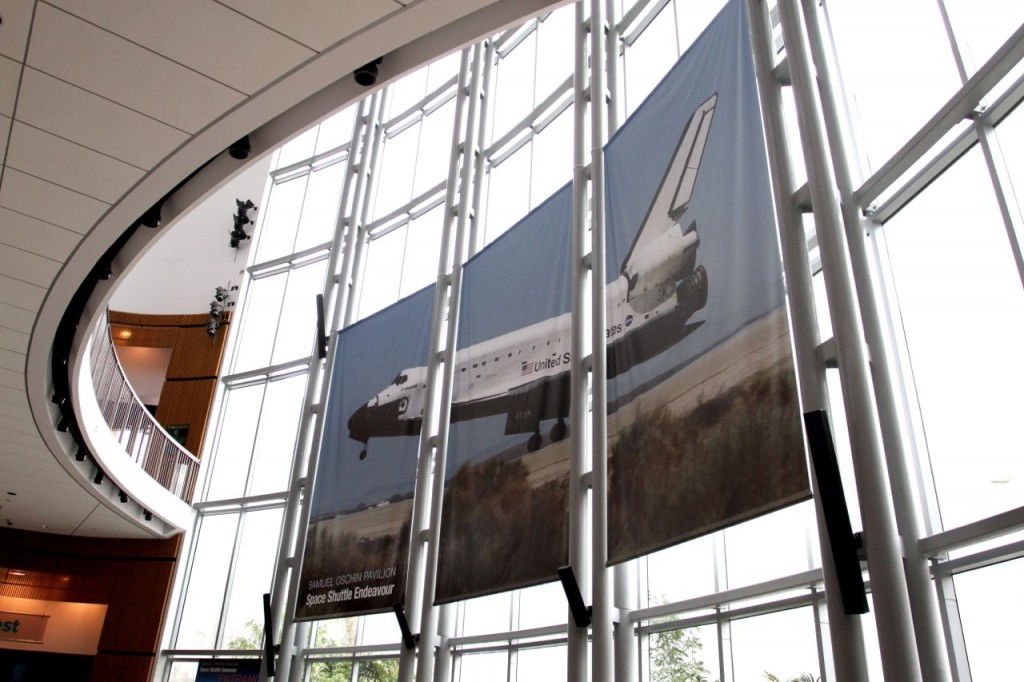
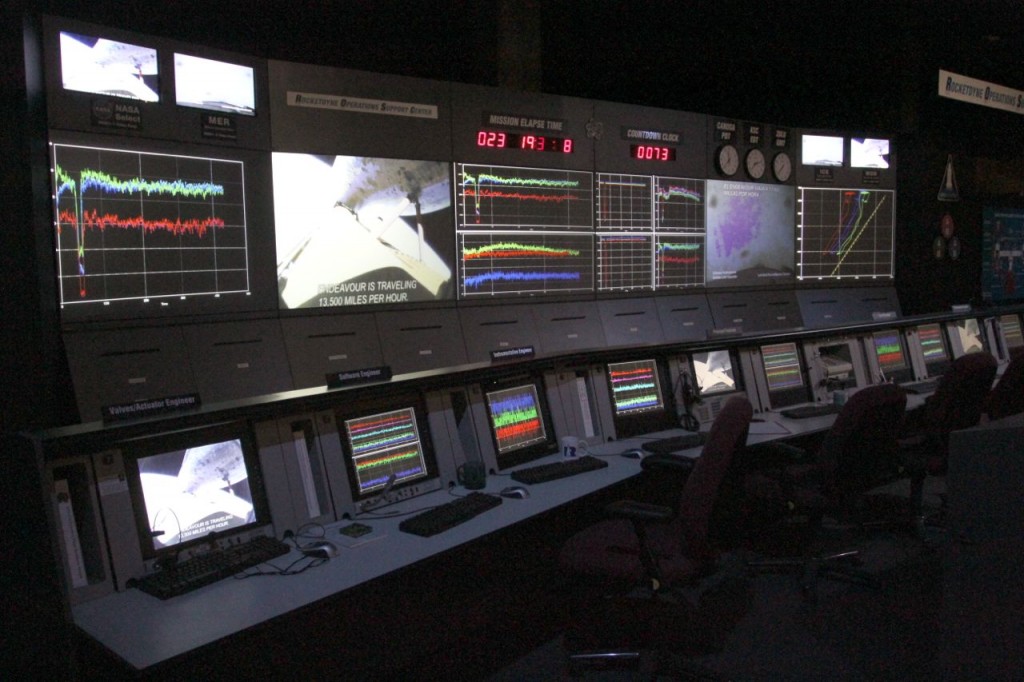
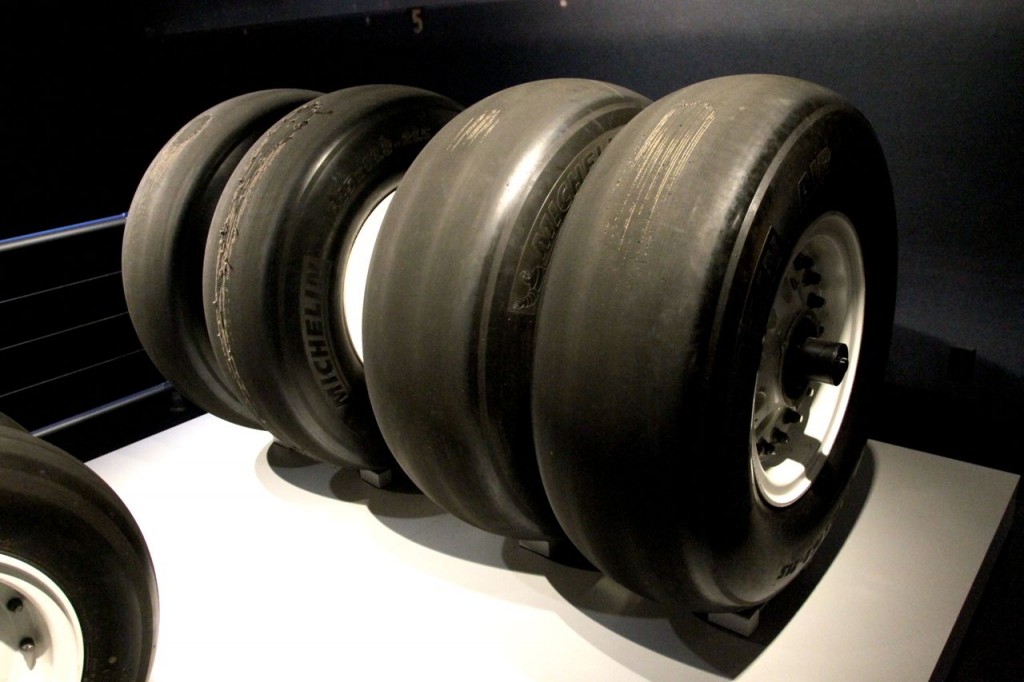
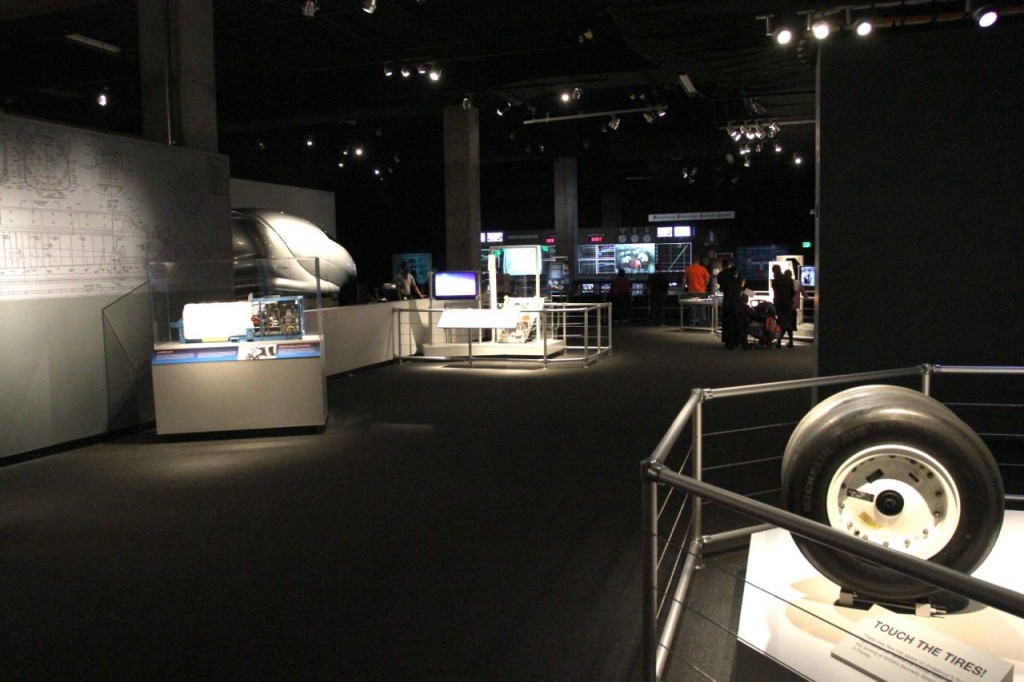
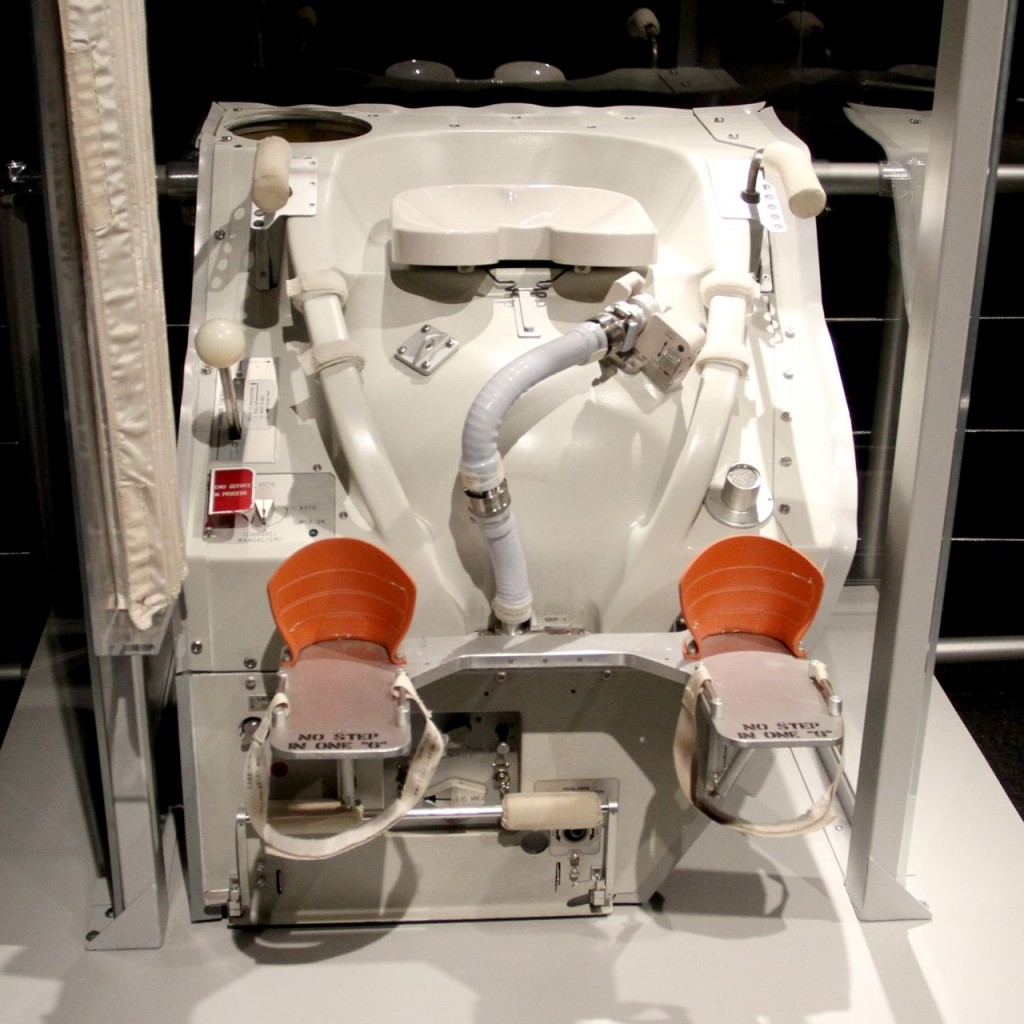
Parting Impressions
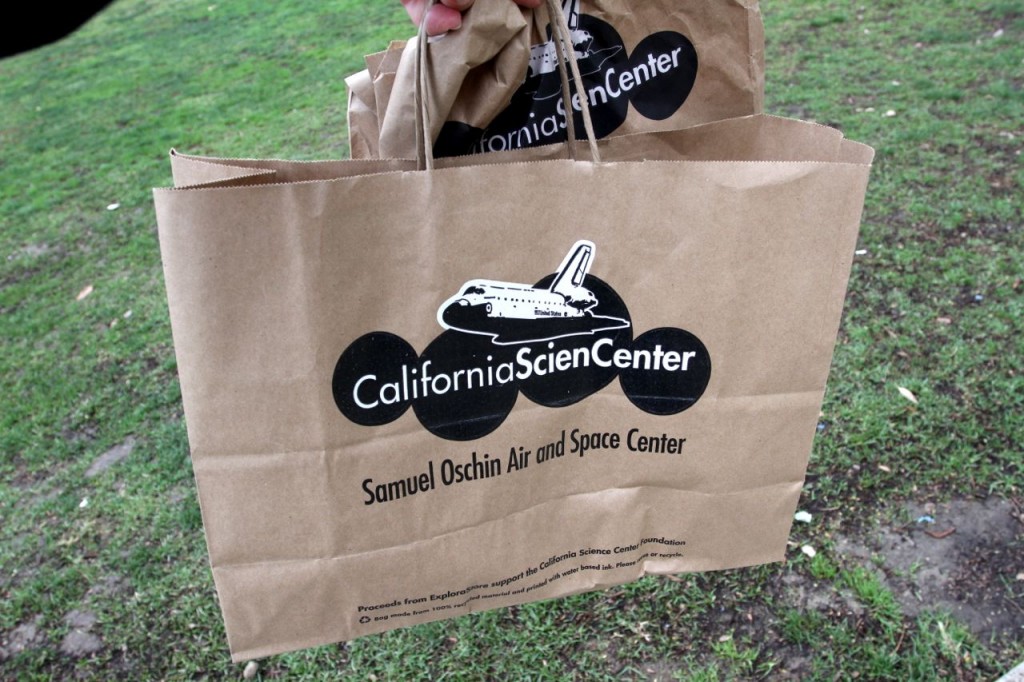
Even as we celebrate, the Space Shuttle program is criticised, particularly around issues of cost and safety, but also the scope of its achievements. As always, it’s easy to find fault in hindsight, and judge historical decisions by the political and economic expedients of the present day. Personally, I reckon we’d be in a much sorrier state had the program not gone ahead. The Shuttle was the workhorse behind the International Space Station, the full learning from which I suspect has yet to be converted. And Endeavour personally, so to speak, enabled the repair of the Hubble Space Telescope.
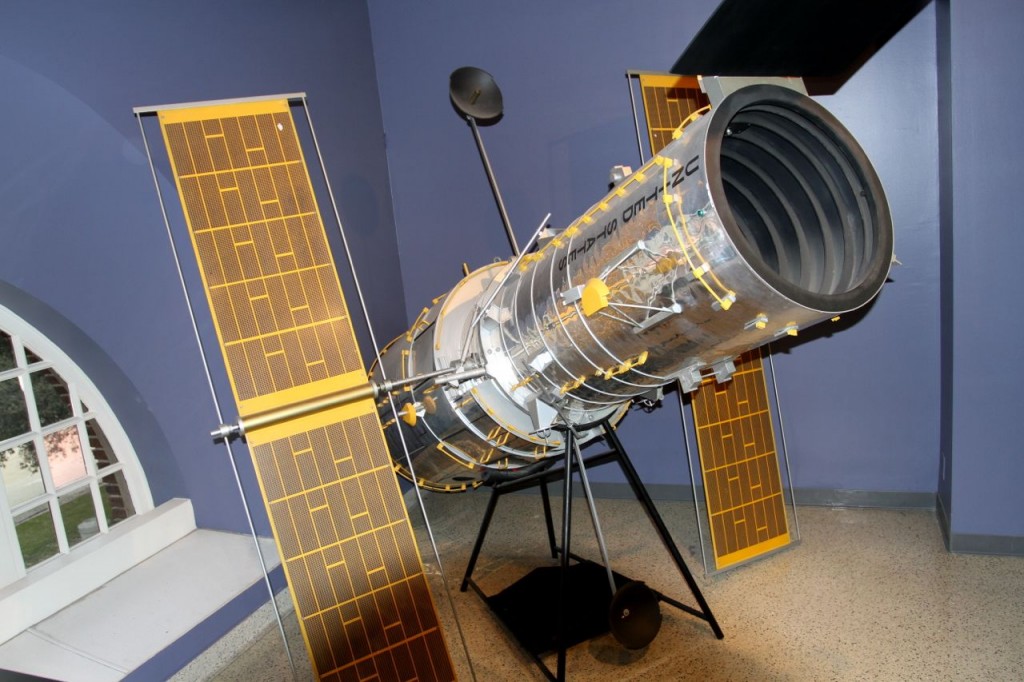
NASA is at a turning point, collaborating more closely with private partners and, most recently, other nations on its manned space program. While the arrival of new entrants, working methods, and relationships are culturally refreshing, surely much of the knowledge and expertise behind them has its roots in the Shuttle and related programs.
Hopefully this note’s been short and sweet. There’s no point my repeating loads of technical and historical information you can get from many sources: not least the NASA and California Science Center websites, which, like Endeavour, are both worth a visit.
ALL PHOTOGRAPHS BY TIM JONES
Of Related Interest on Zoonomian
Matt Mellis Shares 30 Years of the Space Shuttle at the London Science Festival
